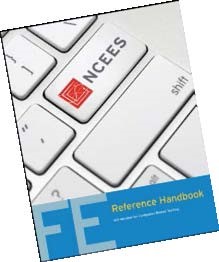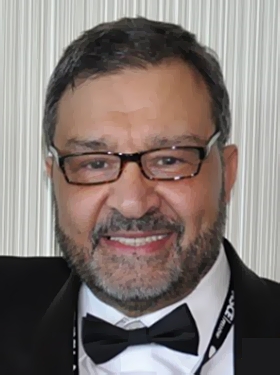Dr Z’s Corner: P.S. Stands for Professional Licensed Surveyor: Let’s Talk about Surveying Licensure, Part-II

Let me start with a question: Abraham Lincoln, Henry David Thoreau, Thomas Jefferson, Daniel Boone, James Cooke and George Washington. What do these famous people have in common? They all engaged in surveying at some periods in their lives. Although the practice of surveying will not provide a sure road to the White House, many members of the profession like to think that important characteristics like problem-solving skills, paying attention to details, quick thinking, and self-reliance, helped these surveyors to become leaders. Unfortunately, many schools, including ours, dropped the Surveying course from their curriculum.
Principles and Practice of Surveying, Computer Based Test (CBT) Exam Specifications
According to NCEES, effective beginning October 1, 2016, the Principles and Practice of Surveying exam will be computer-based as well. It is a closed-book test with an electronic reference. Examinees have 7 hours to complete the exam, which contains 100 multiple-choice questions. The 7-hour time also includes a tutorial and an optional, scheduled break. The exam uses the U.S. Customary System (USCS) of units and was developed with questions that require a variety of approaches and methodologies, including design, analysis, and application. The categories with average number of questions area as follows:
1. Legal Principles (about 28 questions)
Topics: Common/case law boundary principles, Sequential and simultaneous conveyances, U.S. Public Land Survey System, Controlling elements in legal descriptions, Riparian and littoral rights, Property title issues (e.g, encumbrances, interpretation, deficiencies), Sovereign land rights (e.g., navigable waters, eminent domain), Prescriptive rights/adverse possession, Easement rights, Parol evidence.
2. Professional Survey Practices Principles (about 28 questions)
Topics: Public/private record sources, Project planning (e.g., photogrammetric, geodetic, boundary), Control datums, Encumbrances (e.g, easements, rights of way, mineral rights, subsurface rights), Control network accuracy standards, Supervision of and responsibility for field procedures, Supervision of and responsibility for the application of surveying principles and computations, Grading and site preparation, Survey maps/plats, Survey reports and Descriptions.
3. Standards and Specifications (about 13 questions)
Topics: Federal statutes, laws, rules and regulations, State/local statutes, laws, rules and regulations, Monumentation laws and ordinances, U.S. Public Land Survey System, American Land Title Association/American Congress on Surveying and Mapping (ALTA / ACSM) surveys, Geodetic control network accuracy standards, Federal Geographic Data Committee (FGDC) standards (digital mapping), US National Map Accuracy Standards (analog mapping), Federal Emergency Management Agency (FEMA)
4. Business and Professional Practices (about 21 questions)
Topics: Project planning (e.g, parameters, costs, budgeting), Contracts, Risk management (e.g, liability, safety procedures, insurance), Ethics, Communications (oral, written, graphical), Quality assurance procedures, Activities, background, and skills of related professions (e.g, engineers, lawyers, architects, planners)
5. Types of Surveys (about 18 questions)
Topics: American Land Title Association/American Congress on Surveying and Mapping (ALTA/ACSM) surveys, Control and geodetic surveys, Construction surveys (e.g, construction calculations and staking), Hydrographic surveys (e.g, elevations of submerged surfaces), Boundary surveys, Route and right-of-way surveys, Topographic surveys (e.g, scanning, photogrammetry, LiDAR, field), Condominium surveys, Subdivision surveys and Record drawing (as-built) surveys.
Brief History of Surveying
Surveying is as old as recorded civilization and nobody knows when surveying was first used. The history of land surveying dates back thousands of years and forms of land surveying have been around since ancient man in all major civilizations across the globe. As long as there has been property ownership, means of measuring the property and distinguishing one’s land from another became important and methods, techniques and regulations have been developed.
Ownership of land has and still is a very significant part of the lives of everyone in the world. For many scholars, the building of the Great Pyramid at Giza in 2700 BC is considered as one of the first examples in the history of land surveying. The Romans were the next civilization to advance on the initial land surveying techniques of the Egyptians. The early development of surveying cannot be separated from the development of astronomy or mathematics since these disciplines were closely interrelated. Geometry and surveying was particularly necessary in the Nile Valley to establish and control landmarks. In recent history, Napoleon Bonaparte was very enthusiastic about accurate land surveying. When Napoleon was trying to conquer the world, he always made sure that he had very precise maps available at the time, which were obviously very important for him.
I shall close with a final thought. During the Fundamentals of Engineering and Professional Engineering exams, timing is everything. The more time you spend on a difficult question; the more time you risk second guessing yourself. When you use process of elimination to eliminate a wrong answer, make sure you cross it out on your note pad. Don’t leave it there to confuse you if you have to choose between two remaining answer choices.
And lastly, always trust your intuition and believe in yourself. You are braver than you think and more talented than you know. Definitely you will conquer the test!
Until next time,
Ahmet Zeytinci, P.E.
Dr.Z. (This email address is being protected from spambots. You need JavaScript enabled to view it.)








